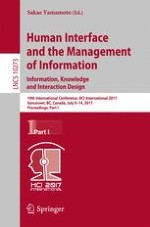2017 | OriginalPaper | Buchkapitel
Research on High Fidelity Haptic Interface Based on Biofeedback
verfasst von : Katsuhito Akahane, Makoto Sato
Erschienen in: Human Interface and the Management of Information: Information, Knowledge and Interaction Design
Aktivieren Sie unsere intelligente Suche, um passende Fachinhalte oder Patente zu finden.
Wählen Sie Textabschnitte aus um mit Künstlicher Intelligenz passenden Patente zu finden. powered by
Markieren Sie Textabschnitte, um KI-gestützt weitere passende Inhalte zu finden. powered by
